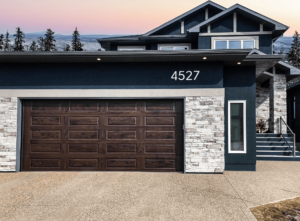Using additive manufacturing, engineers can produce parts that look and feel like the final product. This allows for iterations and tests that reduce the risks of costly production mistakes.
After modeling, the design is “sliced” and sent to the 3D printer. This prints layers of a plastic-like polymer, waiting for each layer to dry before adding the next. Click the https://www.by3design.com/ to learn more.

Rapid prototyping involves creating a physical model of a design using 3D printing. The process starts with a digital model, which is then printed layer by layer until the final product is complete. It’s a time-efficient way to create prototypes that can be tested and iterated quickly and easily, which allows designers to improve their designs before the production phase.
Prototyping is essential for the success of any product development project. Traditional prototyping methods involve a long process that limits design iteration and can delay the completion of projects. However, 3D printing has transformed the prototyping process, enabling designers to work with faster, more accurate models and to implement design changes immediately. This speeds up the overall design and testing cycle and enables designers to deliver the best possible product to their customers.
There are several types of rapid prototyping technologies, each with its own strengths and weaknesses. Selecting the right technology depends on the project requirements and budget. Some of the most common include:
Plastic Printers
These use melted or fused thermoplastic materials to build up a prototype in layers. The resulting parts are strong, durable, and can be used for functional testing. They are also inexpensive and easy to modify, making them a popular choice for prototyping.
Metal Printers
These produce a much more detailed and realistic prototype, but are typically more expensive. The material is melted and fused to the base using lasers, which provides a higher level of precision. The resulting parts are stronger than standard plastics and can be used for functional testing and short-run production.
Other techniques
Other rapid prototyping processes can be used for a wide range of projects and industries. For example, LDMD can be used to create scale models and functional parts for the automotive industry, while SLA is widely used for medical applications such as surgical modeling, prosthetics, and patient-specific dental molds.
Mistakes to Avoid
While rapid prototyping is a powerful tool for the product development process, it’s important not to get carried away and sacrifice quality. Ensure that your team has a clear understanding of what they need from the prototype before starting the process. Avoiding these mistakes can help you save time and money and ensure that your end product meets all of its performance criteria.
Additive Manufacturing
Additive manufacturing (AM) transforms a digital CAD model into a three-dimensional physical solid object or part. It uses a variety of processes to deposit, join or solidify materials under computer control, usually layer by layer.
This technology can produce complex geometries that would be difficult or impossible to make with subtractive manufacturing methods like CNC milling. It also allows for a greater choice of materials and can reduce material wastage. It can be used to create prototypes quickly, allowing design iterations and reducing the time needed to bring products to market.
There are three main types of additive manufacturing: material jetting, laser sintering and stereolithography. The most popular method of 3D printing is material extrusion, which uses a heated thermoplastic or polymer blend to build up the object layer by layer. Common thermoplastics used in AM include acrylonitrile butadiene styrene, polylactic acid, and polycarbonate. Water-soluble polyvinyl alcohol, which can be used as a support material for printed objects, is also widely available. Other materials used in AM include ceramics such as tricalcium phosphate, alumina and zirconia, as well as powdered glass.
Laser sintering and stereolithography use a laser to bind or melt layers of material together under heat. These technologies are more expensive than other AM techniques, but offer high accuracy and precision. They are also ideal for making parts that require a high level of detail.
Another advantage of these technologies is their ability to create functionally graded materials. They can print an object with different materials on the inside and outside of the product, for example abrasion-resistant plastics and conductive metals.
The availability of affordable 3D printers, which exploded in popularity after key patents expired in 2009, has opened up this manufacturing process to hobbyists and small businesses. This, along with advances in the software and materials used by the machines, has expanded their capabilities. For example, in 2008 researchers produced the first self-replicating 3D printer. Since then, 3D printing has become more advanced and is being used in fields such as aerospace and automobile manufacturing, prosthetics, food production, rocket building, medical implants, and even jewelry and art.
Speciality Materials
Designed to fulfil particular engineering requirements, specialty materials open up new possibilities in 3D printing. These materials allow for greater precision in product design, help achieve lower weight and boost strength while maintaining durability and enhancing safety. The synthesis and manipulation of materials in this category yields a variety of solutions, from advanced composites to biodegradable plastics.
The main raw materials for 3D printing include a range of plastics, resins and metals. Plastics are used for a broad spectrum of applications, from desk utensils and toys to household fixtures and accessories. Their firmness, flexibility and bright colors make them popular with both creators and consumers. Plastics are typically printed using fused deposition modeling (FDM), selective laser sintering (SLS) or material jetting processes. Examples of 3D printable plastics include acrylonitrile butadiene styrene (ABS), polyamide (nylon), glass-filled nylon, PC (polycarbonate) and PLA (polylactic acid).
Resins are ideal for printing smooth surfaces and fine details with high resolution. These materials cure quickly under UV light to form solid structures in thin layers. They are used for models that require a high degree of aesthetic quality, such as dental and jewelry prototypes. A wide range of resins are available, including paintable and clear varieties.
Metals are an excellent choice for structural components, owing to their exceptional strength-to-weight ratio. They are durable and resistant to corrosion, heat and oxidation. Common metals used in 3D printing include aluminum, titanium and stainless steel.
In addition to metals, ceramics are an important class of materials for additive manufacturing. Although it may sound like a contradiction in terms, the term “ceramics” refers to an inorganic compound comprising ions and non-metal elements with ionic and covalent bonds. Some popular ceramics used in 3D printing include silica, carbon fiber and silicon. For these applications, ceramics exhibit superior chemical resistance and temperature stability. A broad range of ceramics are also available, making it easy to find the right fit for your application.
Strength
The strength of 3D prints depends on a number of factors, including the geometry/shape of the print, the printer and material used, and the wall thickness. Increasing the wall thickness is one of the most important ways to make a print stronger. This is because 3D printing puts more strain on the outside of the print than the inside, and so a thicker wall provides more protection. It also improves overhangs (geometry shapes in a 3D model that are difficult to print) and water tightness.
The type of filament used is another factor that impacts print strength. PLA is generally considered to be the strongest polymer 3D printer material, due to its tensile strength and resistance to chemicals, heat, and water. However, there are dozens of other materials available, with some offering even better properties than PLA, such as nylon and carbon fiber.
Other characteristics that determine 3D printing strength include the hardness of a print, and its ability to resist impact. The hardness of a printed object is measured using a method called the Rockwell scale, with a higher number indicating a harder material.
A final factor that determines strength is the percentage of a print’s surface area that is covered with material. In theory, a 100% infill density will provide the highest strength, but this is not always possible, and can result in excessive print time and filament use. In general, it is best to opt for a more conservative infill density of around 30%, which will still provide adequate strength for most applications.
Another way to increase the strength of a print is to use an infill pattern that provides support for the structure of the printed object. Triangular infill patterns are often considered to be the strongest, and are favoured by many 3D enthusiasts. Rectangular infill patterns can also be quite strong, but tend to have a greater impact on the print’s speed and accuracy, since they require a more precise extrusion.
Finally, it is important to pay attention to the post processing of a 3D print, especially when removing supports. If supports are removed incorrectly, they can cause a weak spot in the print and potentially lead to breakage or failure. The safest way to remove supports is by dissolving them with a chemical designed specifically for this purpose.








